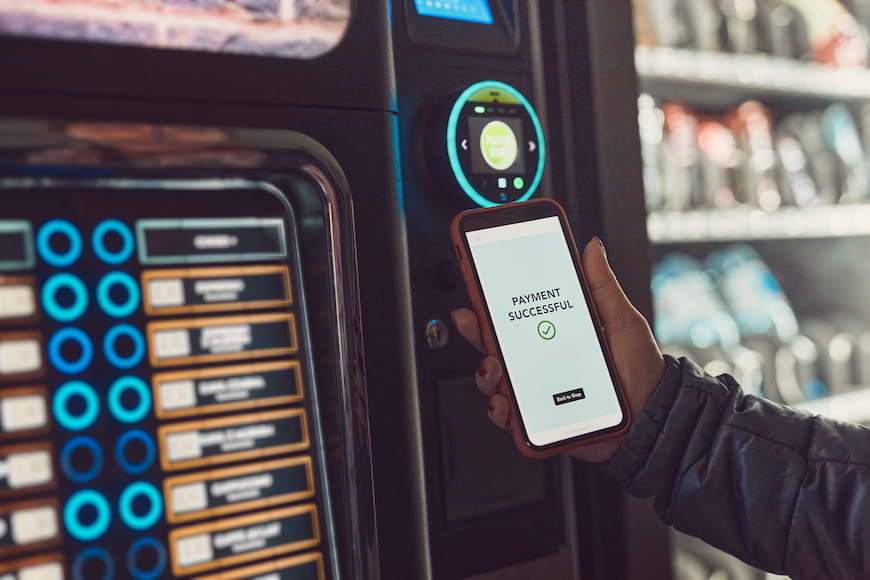The brick-and-mortar campus bookstore was an integral part of the college experience. But changing market dynamics are prompting many institutions to pursue a university bookstore alternative.
SUNY Polytechnic, for example, has transformed its store into a hub where students can access services (such as a student food pantry) that benefit the campus community. At the University of Alaska Anchorage, the campus bookstore is now a place where students can buy snacks and school-branded garments.
These schools are part of a bigger trend to reimagine the campus bookstore. An increasing share of students is shopping online for textbooks and other course materials to get a better deal. Indeed, the average textbook costs $105.37, and 11% of students have “skipped meals in order to afford books and course materials,” according to EducationData.org.
Simply put, traditional campus bookstores face intense competition because students are voting with their feet.
At the same time, operating costs associated with maintaining an inventory of physical books remain high. For many institutions, the campus bookstore is no longer a viable source of revenue.
Instead of resisting this change, forward-thinking higher learning leaders focus on the positive aspects of launching a college bookstore alternative. A shift from selling physical books on campus means the institution can focus on selling higher-margin items, like accessories, clothing, and gifts. By taking this approach, institutions can offset operational costs and deliver student savings. Pursuing alternatives also frees up space for services uniquely suited for face-to-face delivery, such as academic advising.
A growing number of institutions are taking hard-copy books out of the bookstore, but this doesn’t mean they are forcing students to fend for themselves online. Schools like SUNY Polytechnic and the University of Alaska Anchorage allow students to acquire course materials via an institution-backed digital platform.
Some institutions use an e-commerce model to sell both hardcopy and digital textbooks. However, a strong argument can be made for using a digital-first approach as a college bookstore alternative.
Here are a few key benefits:
Most importantly, digital textbooks are typically cheaper than their traditional counterparts, which enables institutions to help cash-strapped students. For example, when South Piedmont Community College moved away from the traditional bookstore model and rolled out a digital-first approach to textbooks and other course materials, the institution successfully stayed within a preset cost ceiling for students.
In sum, replacing or augmenting the bookstore with digital content is a win for students and the institution.
Once the decision to go digital-first has been made, the next step involves making some tough decisions. Unless your institution has an infinite budget and IT resources, you will need to partner with a technology provider, and not all providers are created equal.
The right provider can help you ensure that students get the right content when they need it at the right price.
Here are five things to look for in a digital content partner:
When access is distributed across disparate systems, student performance suffers. To deliver a seamless experience for students and faculty, look for an API-agnostic platform that integrates fully with your existing LMS. This eliminates the need for multiple content systems and applications. Ultimately, it means all learning material is available for academics and students via one platform on the first day of class.
To get the ball rolling, you should only have to give the provider your book list without worrying about coverage gaps. The right provider will have relationships with all the relevant publishers. This way, your institution can provide students and faculty access to all required course materials while preserving academic freedom. Robust platforms also enable access to OERs for maximum coverage breadth.
The platform should allow students to perform actions that just aren’t possible with a traditional textbook, such as generating references, searching across content, and collating notes. Also, look for features such as adjustable backgrounds and text-to-speech capabilities—these features make learning easier for students with specific learning needs. For example, warm-colored background colors, including yellow, can significantly improve reading performance for individuals with dyslexia.
It's hard to improve what isn't measured, and having limited data-driven insights into content use means missing opportunities to enhance student engagement and success. Robust digital learning platforms can deliver usage statistics that data-fy the student experience and help instructors understand where help is needed most. Key metrics include reading time, weekly trends, and social research methods. With these actionable insights, instructors can identify at-risk students before critical assessments and intervene earlier.
Some providers require students to shell out extra cash for access codes. With this approach, students use the codes as passwords when accessing course materials through publisher websites. However, if students have to use multiple course codes or accounts to access third-party information, they might give up on getting course content altogether, which can impact academic performance. In contrast, inclusive access models roll the price of learning content into tuition, making it more convenient for students to get all the content they need.
The traditional campus bookstore was due for a major rethink. With student buying patterns evolving, brick-and-mortar campus bookstores are no longer sustainable.
By using the physical space in different ways and prioritizing digital-first content access, institutions can create a learning experience that is efficient, effective, and equitable. Your institution can drive student engagement, improve equity, and deliver better learning outcomes with the right technology provider.

Drawing on insights from Erik Russell of Occidental College on Campus Convos, this blog explores how innovations in auxiliary services reveal a bigger lesson for higher ed: let technology deliver on-demand convenience, while people provide the human touch that makes the student experience truly personal.
.jpg)
Rural community colleges are lifelines opportunity face unique challenges, like broadband gaps and transportation barriers. Based on the Campus Convos episode with Dr. Bryan Newton of Glen Oaks Community College, we're showing how rural colleges are turning obstacles into innovation.